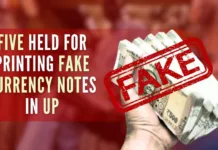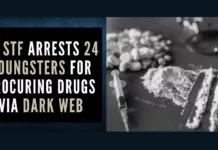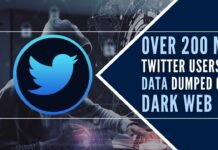
Amazing similarity between Dark Net and bureaucracy
The Dark Net, also known as the Dark Web, is a maze of secret websites that can be accessed only through encrypted channels. It is the hidden collective of internet sites only accessible by a specialized web browser and used for keeping internet activity anonymous and private. This anonymity makes it easy for drug dealers, arms dealers, and other criminal elements to offer their services to potential buyers who can purchase anything from endangered species of animals to guns and illicit drugs. The amazing similarity of the Dark Net to the bureaucracy in their functioning is astounding.
The term ‘bureaucracy’ refers to a complex government organization with multi-layered systems and processes that operate with a high confidentiality level. It is deliberately designed to function in restricted silos to maintain control within the organization, as well as by the political masters. The information-up, decision-down cycle of bureaucracy, crosses innumerable bureaucratic barriers and is often shrouded in secrecy.
Anonymity in the Dark Web derives from the Greek word “anonymia” which refers to hiding personal identity from others. Bureaucrats, especially those serving in supersensitive departments like Defence, Home, Finance, and External Affairs, prefer to maintain absolute anonymity, except, for the topmost rung of bureaucrats, all the others prefer to be faceless at all times. Law enforcement, military, and intelligence agencies are populated by people who don’t want to be found, and who believe themselves to be untraceable.
Anonymity and secrecy breed bureaucratic corruption and is more about bureaucratic structure and culture (how things are done here), as well as the bureaucracy’s socio-political environments. Bureaucratic corruption can also be a tool of regime consolidation, a space of elite struggle for rewards and control. Resultantly, a mafia-like white-collar corruption syndicate (cartels) and isolated corrupt practices emerge at all levels and sectors to enforce corruption and swindle citizens through crafty and convoluted bureaucratic processes.
Corrupt political networks have regularly used the bureaucracy under such conditions to swindle citizens – through the financing of ghost projects, procurement, and implementation of poor-quality public goods, generating kickbacks and other benefits. Political masters are quick to identify ambitious and greedy bureaucrats, who are willing to twist and turn any rule, and regulation, in exchange for a ‘powerful’ post, continuation in that post by getting suitable periodical extensions, a gubernatorial assignment, or into any of the various Statutory commissions, that will ensure, an uninterrupted continuation of perks and privileges.
The ruling political authority, whether at the Centre or the State, breeds highly entrenched economic interests in the public and private sectors, necessitating drafting new rules and inventing complex procedures and conditions and socio-political networks within the bureaucracy to implement schemes for political families and the political party’s enrichment. Thus, bureaucrats have formulated, complex procedures and scrutiny, that involve constant struggles, negotiations, and competitions. This has resulted in the emergence of bureaucratic cartels in every Ministry and office, that are constantly filtering and regulating, the entry of competitors, and weeding out non-complying elements. Secrecy and anonymity at every stage like in the darknet, facilitates smooth entry, into the labyrinthine bureaucratic structures, of select entities, who will be helped to navigate, safely, to precise desks, and offices, for speedy resolution and settlement.
Secrecy in bureaucracy enables its manipulation by political actors. Or, as Karl Marx construed it, an instrument in the hands of powerful individuals (political elites or bourgeoisies) placed differently in the societal and institutional hierarchies to use for the promotion of their own or group’s interests unruly politicians can browbeat a docile bureaucracy into supporting drug mafias, communal forces, connive at the creation of communal vote-banks, religious groups that need to be favoured for selective implementation of beneficial policies, which set of laws to be selectively applied, and when to be strict and lax in implementation of policies and laws. The excuse of bureaucratic discretion is often used to justify the selective appropriation of welfare schemes, by select en-bloc voting groups, discretion over which policy domain to focus on during the implementation process, and the timing of implementation. A concrete example is the latest revelation of the large-scale diversion of funds meant for flood victims, drought relief, and earthquake relief, into the family Trust of the Sonia Gandhi family. Many ministries also lavishly diverted funds into this family Trust, including public sector banks. These were all bureaucratic manipulations performed within the bureaucracy darknet, about which the public has little or no information. This is because the bureaucrat’s actions and behaviours are ritualistically ordained to follow particular patterns over others, some of which reduce public accountability strategies to token administrative formalities. The result is the personification of power and the accumulation of resources (power and wealth) for private purposes by a small group of influential politicians, industrialists, and bureaucrats, in pursuit of their personal greed for the aggrandizement of power and wealth rather than the common good. Dennis Prager, American Conservative radio talk show host and writer, correctly states “More harm was done in the 20th century by faceless bureaucrats than tyrant dictators”.
One is left wondering, did the bureaucracy inspire the setting up of the Dark Net?
Note:
1. Text in Blue points to additional data on the topic.
2. The views expressed here are those of the author and do not necessarily represent or reflect the views of PGurus.
For all the latest updates, download PGurus App.
- Redundant stones and candles - June 14, 2024
- A new country being conceived – Bangladesh being prepared for another insemination - June 7, 2024
- Bureaucracy – A Dark Net? - May 22, 2024










